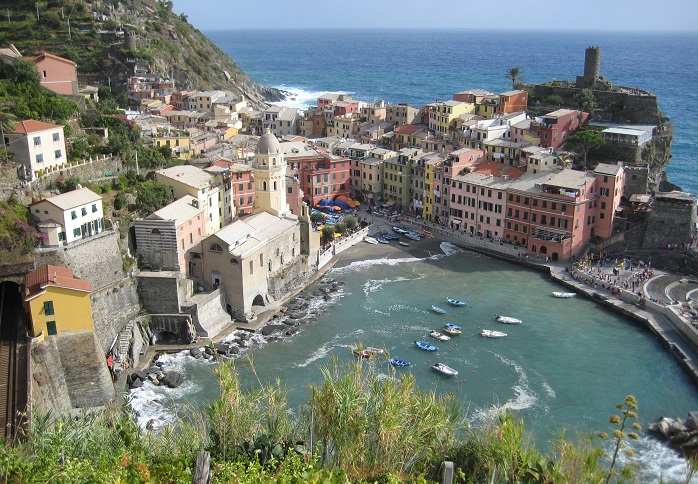
Your retro Virtual Italy Vacation continues our hike along the cliffside “Blue Path” to Vernazza, site of disastrous 2011 mudslides.
NOTE: Since European travel is still a no-go with the pandemic continuing, I’m continuing my blog series offering a virtual vacation and time-travel to my first big trip with Thor in 2008. Italy! After starting with highlight photos posted here on Saturday, Jan. 30, I’ll now resume every week (after the blogging detour in real time to Hawaii). Join us in Rome, Florence, Cinque Terre, Venice, and Milan. Buon viaggio!
Last week Thor and I had reached one of the clifftops along the winding cliffside trail, where we could look down at our destination — the fishing village of Vernazza.
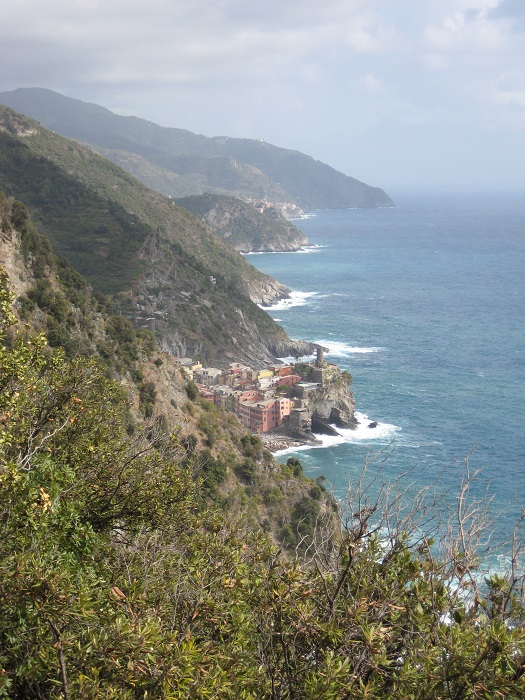
A reminder from last week: The Sentiero Azzurro (Blue Path) along the rugged coast, linking the isolated five villages of the Cinque Terre, dates from the 12th to 13th centuries in the early Republic of Genoa. It was originally a mule track, the only link between the villages. Thor and I were lucky to hike sections of it on our 2008 trip, as a catastrophic storm and rains in 2011 severely damaged the route and two villages, and some sections of the trail remain closed today.
The agricultural terraces, cultivated with grapes and olive and lemon trees among other crops, were built up since Medieval times and also served to mitigate heavy rainfall runoff. Since around the 1950s, many farmers stopped tending the crops and terraces as they left for jobs in cities, and many of the terraces fell into neglect. These ones appeared to remain in good condition:
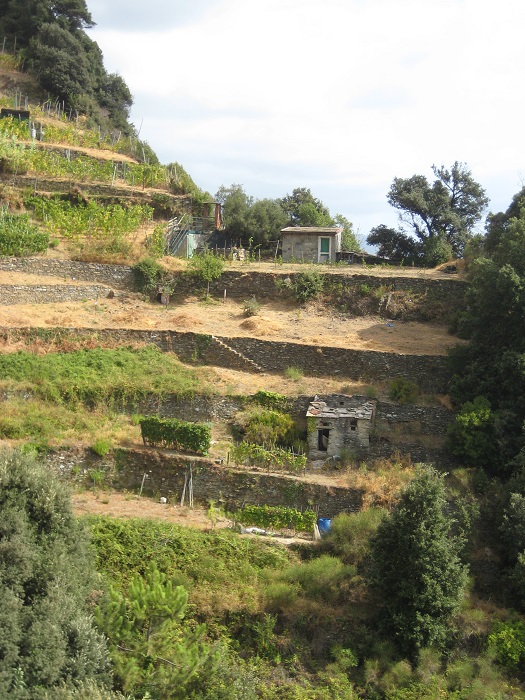
In addition to the danger of mudslides, the steep cliffs also pose a danger of rockfalls. DocThor will now don his geologist hat to explain:
“The villages of Cinque Terre are built on steeply dipping rocks. This means the layers are nearly vertical, like the leaves of a book resting on its spine. The orange arrow in the photo below points to a cliff face of vertical rock layers.”
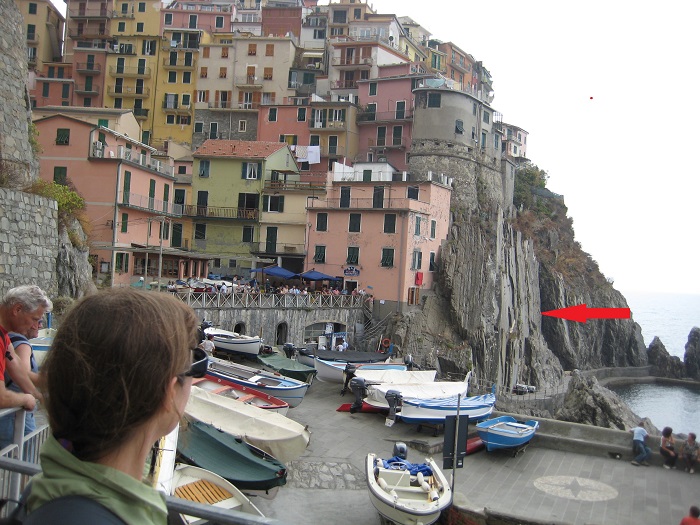
“In situations like this the rocks tend to break along the weak bedding planes and fall as illustrated below. Warning! The following image may be too intense for young audiences!”
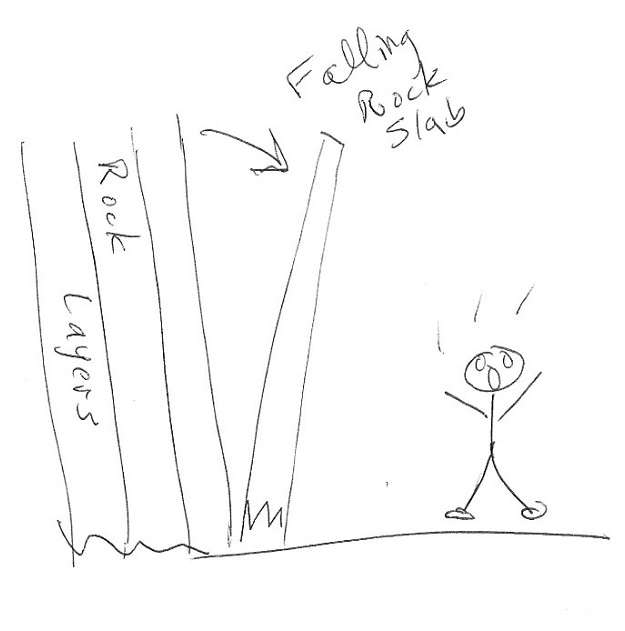
“The rock layers can be stabilized by a process known as “rock stitching” where a hole is drilled into the rock and a long bolt is inserted along with a cap washer and nut to hold the layers in place as seen below.”
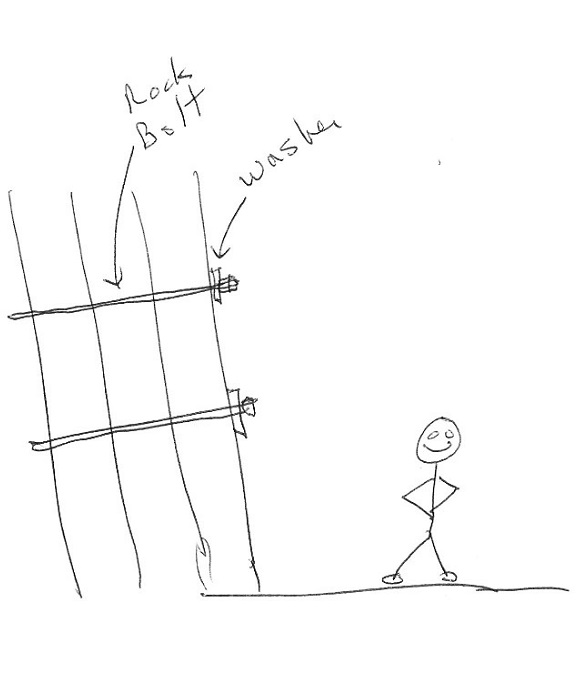
“The image below shows a section of the Cinque Terre trail where rock stitching has been employed. The engineers have also added a curtain of chain link wire to hold back small falling rocks.”
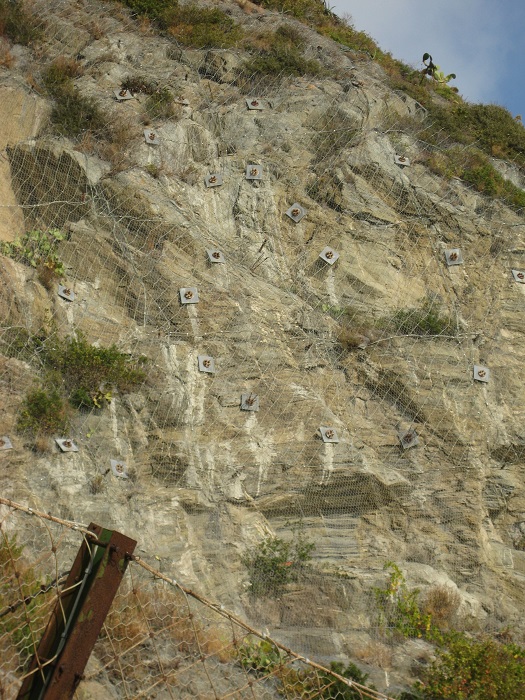
Thank you, DocThor! After the disastrous rain torrents, local efforts began the work of restoring the historic protective terraces, and the work has gained funding and momentum. For more on this project, here’s a link to that story:
http://atlasobscura.com/articles/cinque-terre-terraces
We feel so lucky to have hiked portions of the trail before the disasters closed most of it. The scenery was awe-inspiring, and the quirky fences, buildings, and feral cats along the steep hike kept us distracted from the broiling sun. Getting closer now to the promise of cooling sea breezes:
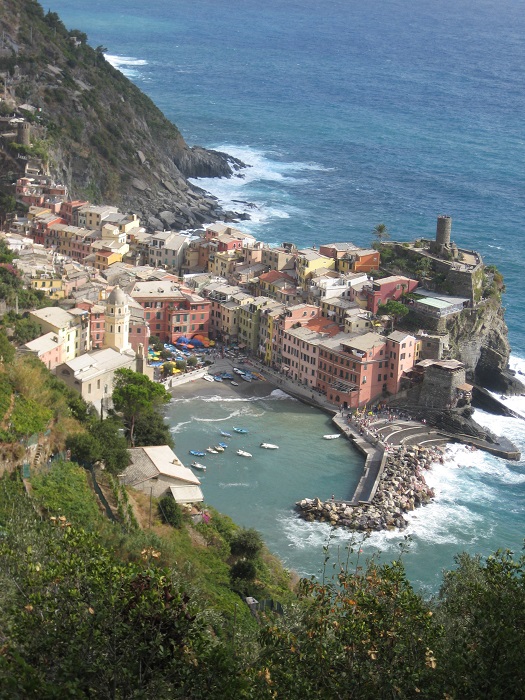
It seems that in Italy, there is always a life-saving vapa within reach, these whimsical drinking fountains channeling the natural springs.
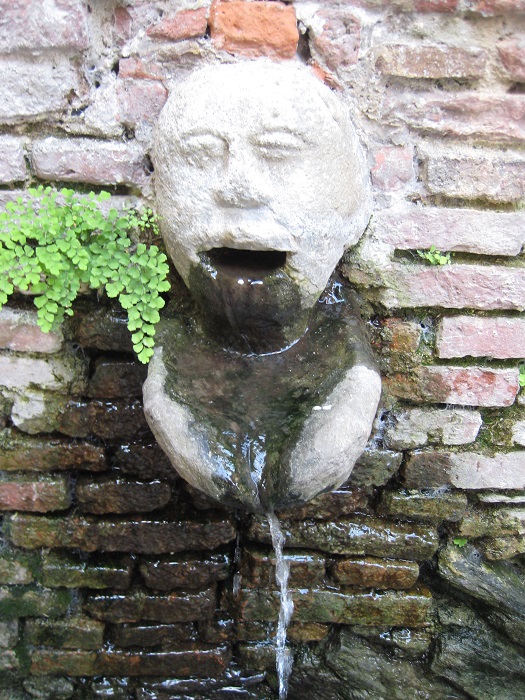
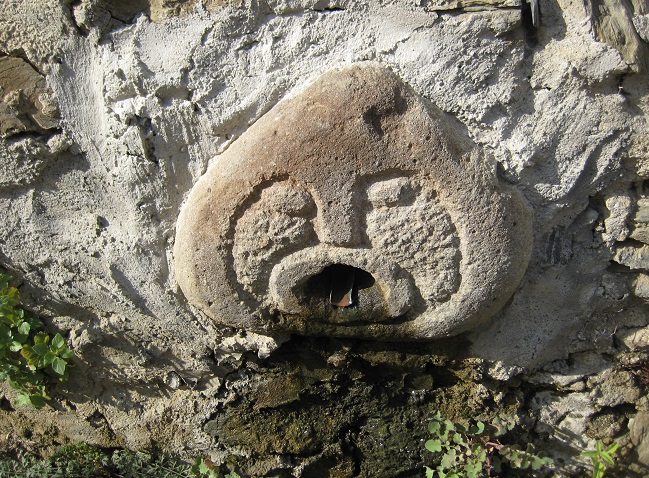
Descending, we began to pass more buildings, including this gift shop with replicas of the weathered vapa.
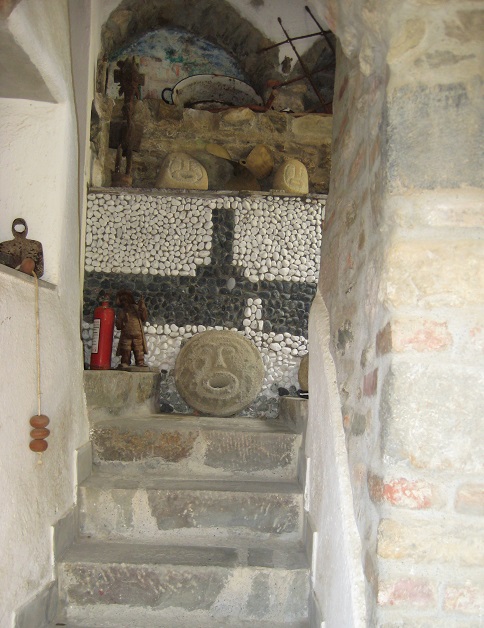
The trail then took us down through passages between buildings and a portion of the fishing village on the way to the quay.
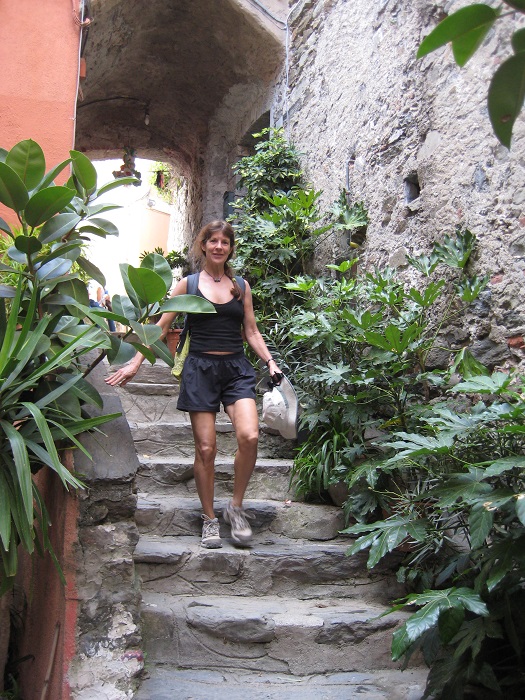
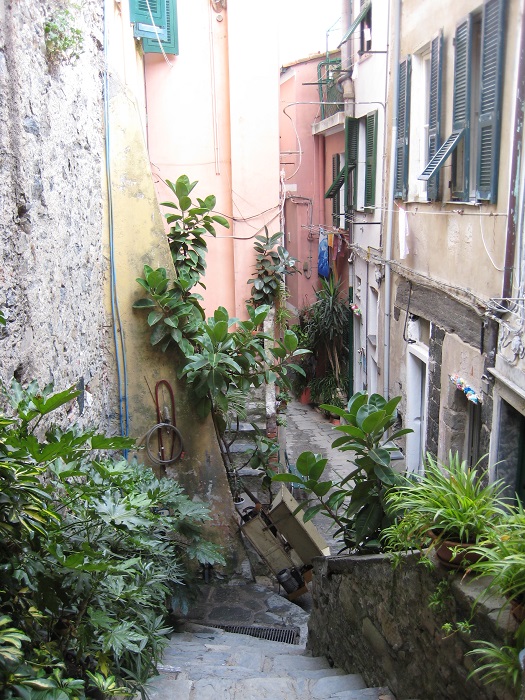
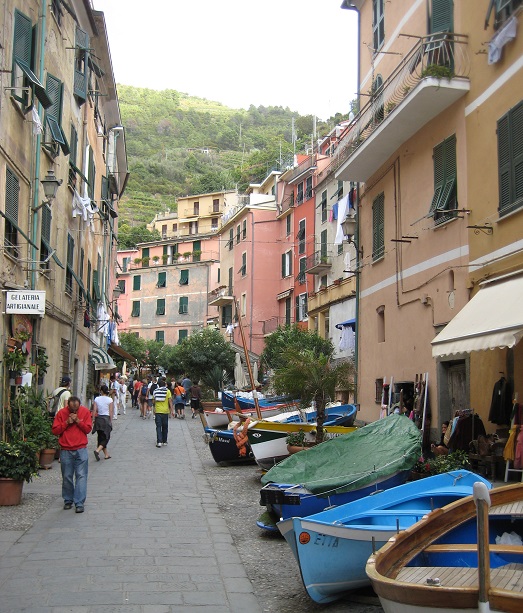
The following two photos, from Booking.com, show the village inundated up to the second stories by the mudslides of 2011, and the subsequent cleanup starting.
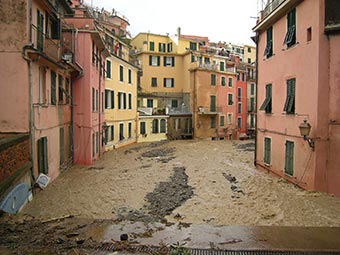
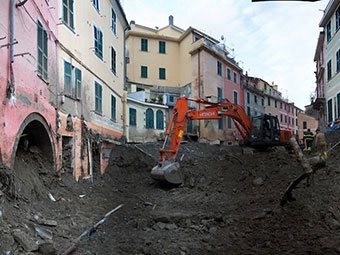
Vernazza and Manarola sustained heavy damage, but since have been restored and are welcoming tourists again. The painted fishing boats like this one that we saw are still an attraction:
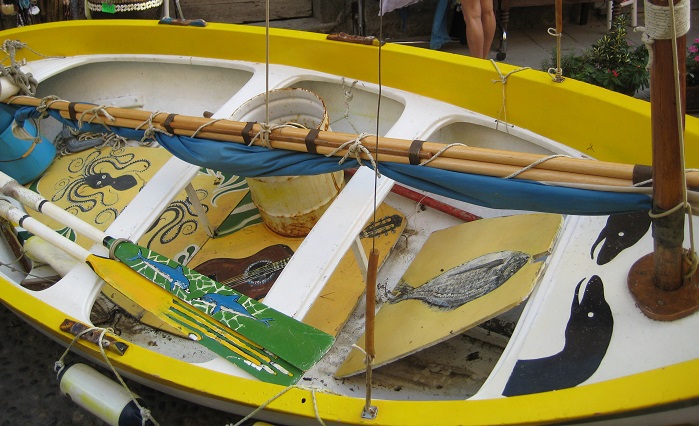
To get to the quay for a snack and a beer to quench our thirst, we passed buildings perched like barnacles on the cliff, with the waves breaking beneath.
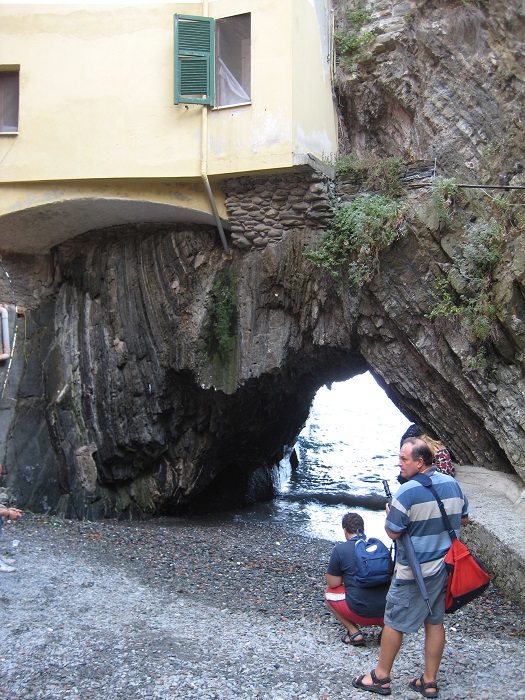
We found a spot in a bistro above the quay and beneath a Medieval guard tower, where we sat under the awning at the lowest level to enjoy the cooling sea breeze and cold beers.
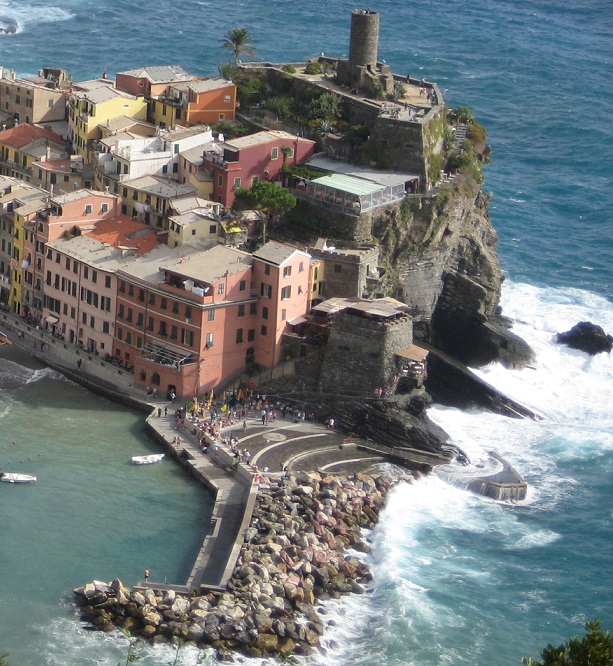
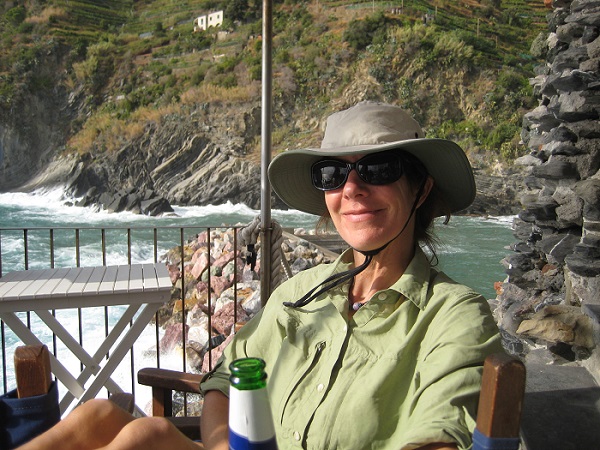
Below us, on the concrete quay extending into the crashing waves, we watched daring locals ride the big breakers to be deposited onto the flooding quay. We thought it looked fun, but realized we’d probably kill ourselves if we tried it. Here’s a YouTube of the action:
https://www.youtube.com/watch?v=t8Tcndvh4os
Apparently the winter storms get pretty wild here, as evidenced by the watertight door into the fortress behind us.
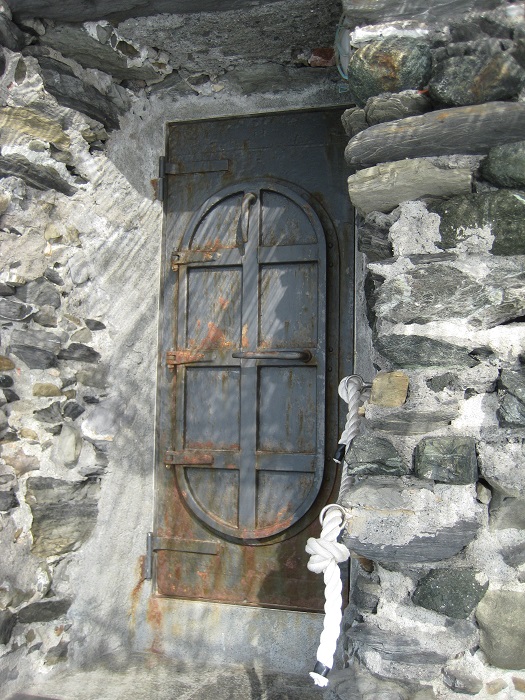
Next week: The tunnel to Guvano Beach and more!
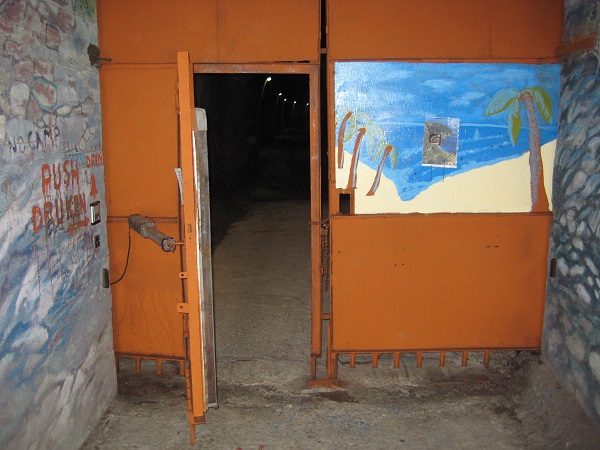
*****
You will find The Rambling Writer’s blog posts here every Saturday. Sara’s latest novel from Book View Cafe is available in print and ebook: The Ariadne Connection. It’s a near-future thriller set in the Greek islands. “Technology triggers a deadly new plague. Can a healer find the cure?” The novel has received the Chanticleer Global Thriller Grand Prize and the Cygnus Award for Speculative Fiction. Sara has recently returned from another research trip in Greece and is back at work on the sequel, The Ariadne Disconnect. Sign up for her quarterly email newsletter at www.sarastamey.com

1 thought on “The Rambling Writer’s Italy, part 19: Cinque Terre’s Sentiero Azzurro to Vernazza”